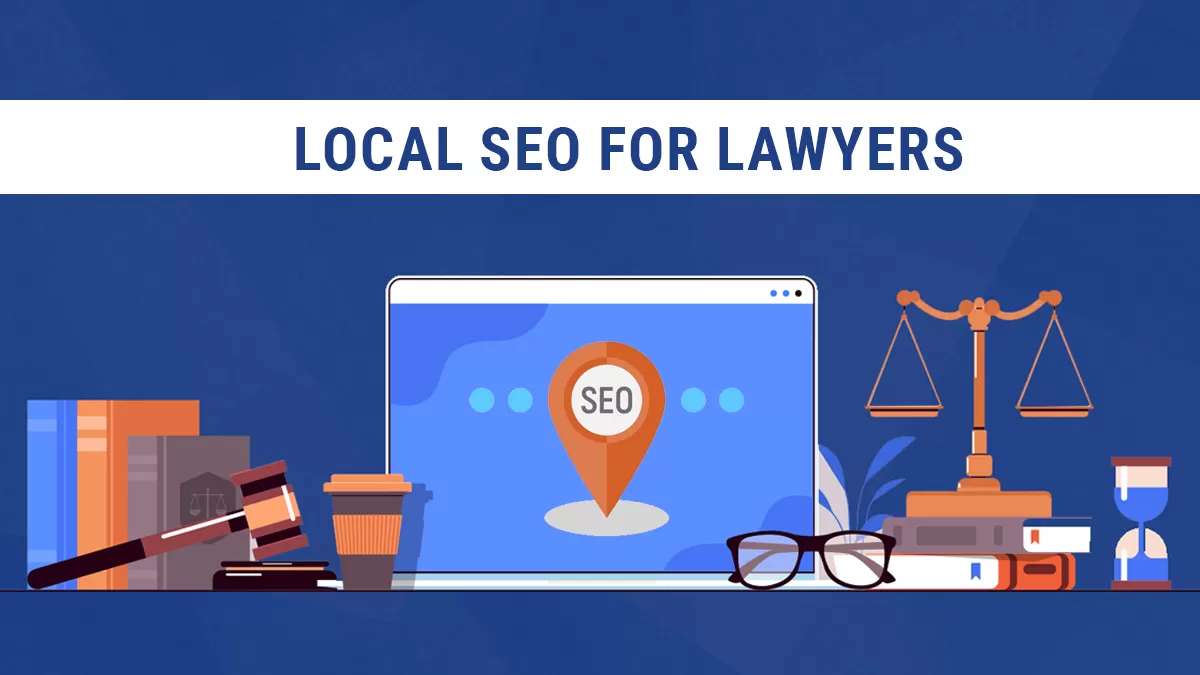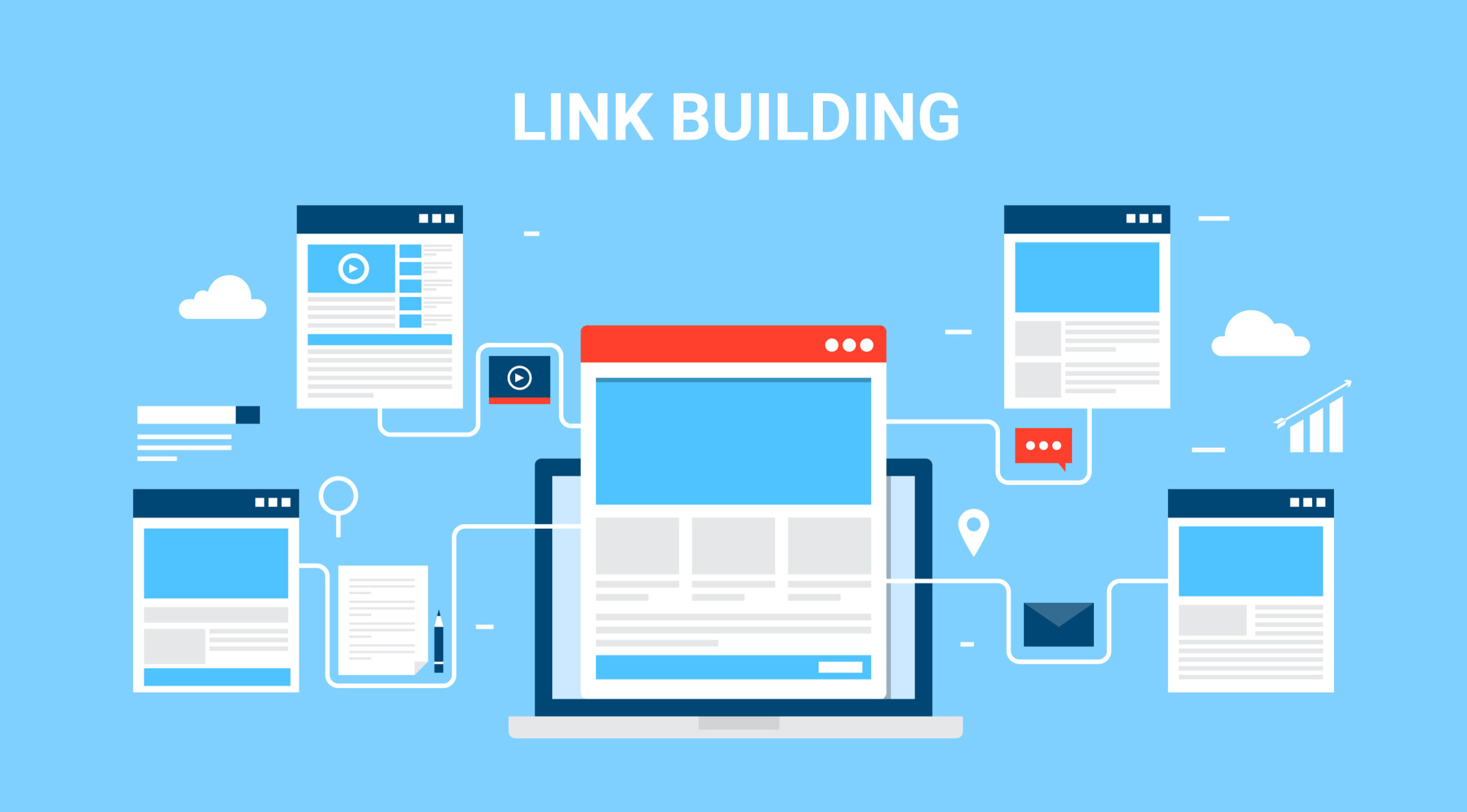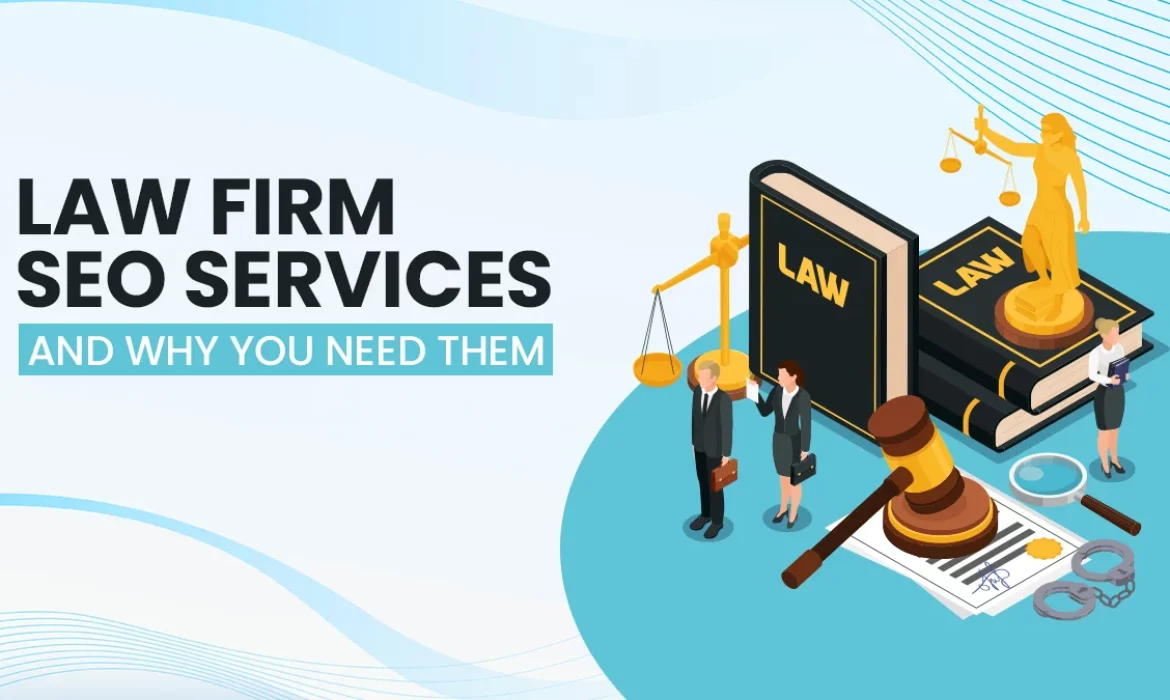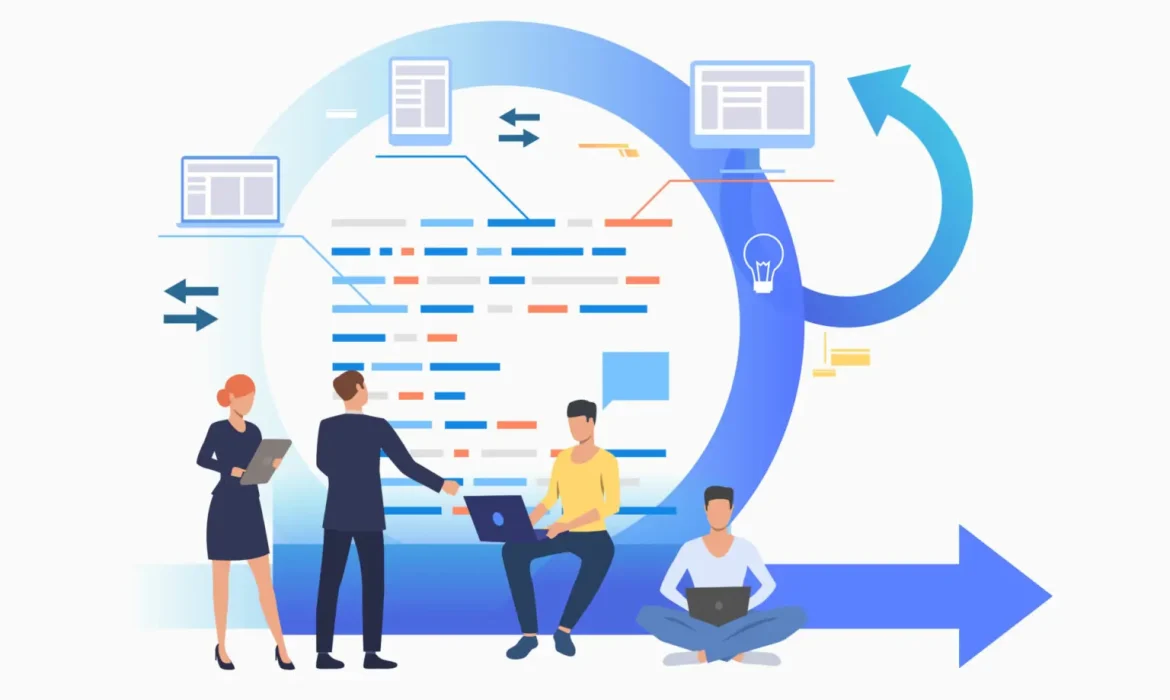New Gmail Password Hacking Threats: Protect Your Account!
Introduction to Gmail Security Risks
As the digital landscape continues to evolve, the security of Gmail accounts has become a paramount concern for users worldwide. Gmail, being one of the most widely used email services, is an attractive target for cybercriminals. Recent trends have highlighted a significant increase in hacking incidents specifically aimed at Gmail users, emphasizing the necessity for heightened awareness regarding potential security threats. The proliferation of phishing attacks, unauthorized access attempts, and data breaches signifies that even individuals who consider themselves tech-savvy may fall prey to these malicious activities.
Password security emerges as the essential first line of defense against unauthorized access to Gmail accounts. Many users, however, may unknowingly compromise their account security through complacency, such as using weak or easily guessable passwords. It is alarming how simple tactics employed by hackers can exploit these vulnerabilities, leading to significant breaches of personal information. With cyber threats becoming increasingly sophisticated, relying on common passwords or failing to implement timely updates can expose users to unnecessary risks.
To effectively protect their online identity, users must remain vigilant about security risks. This includes regularly reviewing account activity, enabling two-factor authentication, and employing complex, unique passwords for each online service. Understanding that complacency can breed vulnerabilities is crucial in the battle against cyber threats. Users must prioritize their account security, stay informed about the newest hacking trends, and proactively enhance their defenses to mitigate the risks associated with Gmail account hacking.
Recent Hacking Incidents and Their Implications
Recent months have seen a notable rise in hacking incidents targeting Gmail accounts, emphasizing the urgent need for users to enhance their password security. Phishing schemes have emerged as a particularly pervasive method employed by cybercriminals. In these schemes, attackers utilize deceptive emails disguised as legitimate communications from trusted sources to trick users into divulging their login credentials. This technique exploits the trust users place in familiar entities and often results in severe breaches of personal information.
In addition to phishing, brute force attacks have posed a significant threat, wherein hackers systematically attempt various password combinations until they gain access to a user’s account. This method highlights the importance of using robust passwords that incorporate a mix of letters, numbers, and symbols. Commonly used passwords, often comprised of easily guessable information, are particularly vulnerable to such attacks. Security experts have recommended creating passwords that are both lengthy and complex to safeguard against these tactics.
Furthermore, data breaches of third-party services have contributed to the escalating issue of account hacking. When third-party websites or applications experience security lapses, the compromised data may include users’ Gmail credentials. In several cases, attackers have exploited these breaches to gain unauthorized access to Gmail accounts, leading to potential identity theft and data breaches.
The implications of these hacking attempts are significant and multifaceted. Users not only risk having their data stolen but could also face long-term consequences associated with identity theft, which may involve financial loss and damage to one’s credit reputation. As the prevalence of these threats continues to grow, the emphasis on adopting stronger password practices becomes increasingly critical. Awareness of the tactics employed by hackers can empower users to better protect their online accounts.
Best Practices to Secure Your Gmail Account
Securing your Gmail account is paramount in today’s digital age, where cyber threats are prevalent. The first and foremost step is to create strong, unique passwords. A strong password typically contains a combination of uppercase and lowercase letters, numbers, and special characters. It should be at least 12 characters long and not easily guessable, avoiding common words, phrases, or personal information. Utilizing a password manager can greatly assist in this process, as it allows users to generate and store complex passwords without the need to remember each one.
Another crucial aspect of securing your Gmail account is to enable multi-factor authentication (MFA). This adds an additional layer of security by requiring a second form of verification, such as a text message code or an authentication app, in addition to your password. MFA significantly decreases the likelihood of unauthorized access, even if your password is compromised.
Regularly reviewing your account activity is also vital. Gmail provides an option to check the last account activity at the bottom of your inbox. By monitoring access details, such as the locations and devices used to sign in, users can identify any suspicious activities. If unfamiliar access is detected, it is important to change your password immediately and report any suspicious activity to Google.
Recognizing and avoiding phishing attempts is essential for protecting your account. Phishing emails often appear legitimate, prompting users to click on dubious links or provide sensitive information. Always check the sender’s email address and be cautious of unsolicited requests for personal data.
Furthermore, it is advisable to regularly update your security settings. This includes reviewing recovery options, such as phone numbers and backup emails, to ensure they remain current and secure. By implementing these best practices, users can significantly enhance their Gmail account’s security against hacking attempts.
What to Do If You Suspect Your Gmail Account Has Been Hacked
When individuals suspect that their Gmail account may have been compromised, it is crucial to act promptly and decisively to regain control and protect personal information. The first step is to change the password immediately. This action can help prevent further unauthorized access. To do this, users should access the Google Account security page, where they can navigate to the “Security” section and select “Password.” It is advisable to choose a strong, unique password that combines letters, numbers, and special characters.
Next, users should verify and update their account recovery options. This includes checking the recovery email address and phone number associated with the account. Ensuring these recovery options are current will facilitate account recovery if the breach resulted in further complications. Additionally, users must review their recent account activity to identify any unauthorized actions. Google provides an option to check recent sign-in activity, enabling individuals to see if there have been logins from unfamiliar locations or devices.
It is also recommended to notify Google about any suspected unauthorized access. To report a hacked account, users can visit the Gmail Help Center where they will find guidance on recovering a compromised account. Informing Google can lead to further protective measures for the user’s account and aid in monitoring for potential future breaches.
Furthermore, users should assess and update the security of any other accounts linked to their Gmail. If these accounts share the same password or were accessed using the Gmail account, they may also be vulnerable. Monitoring all accounts for unusual activity over the following weeks is vital. Users should enable two-factor authentication wherever possible, as this adds an extra layer of security that could deter future hacking attempts.
Choose the Right SEO Agency for Your Law Firm: Avoid Scams
Essential Guide to Hiring an SEO Agency for Your Law Firm: Avoid Scams and Maximize ROI
In today’s digital age, a strong online presence is crucial for law firms looking to attract new clients. Search Engine Optimization (SEO) plays a pivotal role in enhancing visibility and credibility in the legal industry. However, hiring the right SEO agency can be a daunting task, especially with numerous options available and potential scams lurking around every corner. This guide will help you navigate the process of hiring an SEO agency for your law firm, ensuring you make informed decisions and avoid common pitfalls.
Understanding SEO and Its Importance for Law Firms
Before diving into how to choose the right SEO agency, it’s essential to understand what SEO is and why it matters for law firms. SEO is the practice of optimizing your website to rank higher in search engine results pages (SERPs). For law firms, this means appearing at the top of search results when potential clients search for legal services in your area.
Benefits of SEO for Law Firms
Increased Visibility:
A well-optimized website can significantly increase your visibility online, making it easier for potential clients to find you.
Targeted Traffic:
SEO helps attract visitors who are actively searching for legal services, increasing the likelihood of converting them into clients.
Cost-Effective Marketing:
Compared to traditional advertising methods, SEO is often more cost-effective and provides a higher return on investment (ROI).
Building Credibility:
High search rankings can enhance your firm’s credibility and authority in your practice area.

Boost Your Law Firm’s Online Presence with Law Firm Local SEO Services
Key Factors to Consider When Hiring an SEO Agency
When seeking an SEO agency for your law firm, consider the following factors:
1. Experience in the Legal Industry
Look for agencies that specialize in legal SEO or have a proven track record with law firms. They should understand the unique challenges and regulations within the legal sector.
2. Transparent Pricing Structure
Beware of agencies that offer vague pricing. Request detailed pricing information, including any additional costs for services like content creation or technical audits.
3. Proven Results and Case Studies
Request case studies or references from previous law firm clients. An effective SEO agency should be able to demonstrate their success in improving search rankings and driving traffic.
4. Ethical SEO Practices
Ensure that the agency employs white-hat SEO techniques compliant with search engine guidelines. Avoid agencies that promise quick results through black-hat methods, as these can lead to penalties.
5. Comprehensive Services
Your chosen agency should offer a range of services, including keyword research, on-page optimization, link building, and content creation. A holistic approach to SEO will yield better results.
Questions to Ask Potential SEO Agencies
Before making your final decision, consider asking the following questions:
Question |
Purpose |
|---|---|
| What specific SEO strategies do you use? | Understand their approach and expertise. |
| How do you measure success? | Ensure they provide clear metrics and reporting. |
| Can you provide references or case studies? | Verify their experience and success in the industry. |
Red Flags: Identifying SEO Scams
Unfortunately, the SEO industry is rife with scams and unethical practices. Here are some red flags to watch out for when evaluating potential SEO agencies:
1. Guaranteed Rankings
Be wary of agencies that promise guaranteed rankings in a specific timeframe. SEO is a complex and ever-evolving field, and no one can guarantee a top position on search engines.
2. Lack of Transparency
A reputable agency should be transparent about their strategies and techniques. If they are unwilling to share their methods or provide regular reports, it’s a sign to look elsewhere.
3. Black Hat Techniques
Some agencies may use unethical “black hat” techniques to achieve quick results. These can include keyword stuffing, cloaking, and buying backlinks. Such practices can lead to penalties from search engines, harming your firm’s reputation.
4. Poor Communication
Effective communication is key to a successful partnership. If an agency is difficult to reach or unresponsive, it may indicate a lack of professionalism.
Steps to Choose the Right SEO Agency
Now that you know what to avoid, here are some steps to choose the right SEO agency for your law firm:

Choose the Right SEO Agency for your Business in 2024
1. Define Your Goals
Before you start looking for an SEO agency, it’s crucial to define your goals. Are you looking to increase website traffic, improve your search rankings, or enhance your online reputation? Having clear objectives will help you communicate your needs to potential agencies and evaluate their proposals effectively.
2. Research Potential Agencies
Take the time to research various SEO agencies that specialize in working with law firms. Look for agencies with a proven track record, positive client testimonials, and case studies that demonstrate their success in improving search rankings and driving traffic. Utilize online resources, such as review sites and professional networks, to gather information about their reputation.
3. Ask for References
Don’t hesitate to ask potential agencies for references from their previous clients. Speaking directly with other law firms that have worked with the agency can provide valuable insights into their performance, communication style, and results. A reputable agency should be more than willing to provide references.
4. Evaluate Their Strategies
During your discussions with potential agencies, inquire about their SEO strategies. A good agency should be able to explain their approach clearly and how it aligns with your goals. Look for agencies that focus on ethical, white-hat SEO techniques, such as content marketing, on-page optimization, and link-building strategies that comply with search engine guidelines.
5. Request a Proposal
Once you’ve narrowed down your options, request a detailed proposal from each agency. The proposal should outline their recommended strategies, timelines, deliverables, and pricing. Pay attention to how well they understand your law firm’s unique needs and how they plan to address them.
6. Assess Communication and Support
Effective communication is vital for a successful SEO partnership. Evaluate how responsive and communicative each agency is during the proposal process. A good agency should be proactive in providing updates, answering questions, and addressing concerns throughout the campaign.
7. Consider the Budget
While cost shouldn’t be the only factor in your decision, it’s essential to consider your budget. Compare the pricing structures of different agencies and ensure that you understand what services are included. Be cautious of agencies that offer extremely low prices, as this may indicate a lack of quality or ethical practices.
8. Monitor Progress and Results
Once you’ve chosen an SEO agency, establish a system for monitoring progress and results. Regularly review performance metrics, such as website traffic, keyword rankings, and conversion rates. A reputable agency will provide you with regular reports and be open to discussing adjustments to the strategy based on performance.
Conclusion
Hiring the right SEO agency for your law firm is crucial for establishing a strong online presence and attracting new clients. By focusing on experience, ethical practices, and effective communication, you can make an informed choice that drives results. Remember, investing in quality SEO can yield significant returns for your practice.
FAQs
1. How long does it take to see results from SEO?
SEO is a long-term strategy. Generally, it takes 3 to 6 months to start seeing significant results, depending on the competitiveness of your niche and the current state of your website.
2. What is the average cost of hiring an SEO agency?
Costs vary widely depending on the agency’s expertise and the services provided. On average, law firms can expect to pay between $1,000 to $5,000 per month for comprehensive SEO services.
3. Can I do SEO for my law firm myself?
While DIY SEO is possible, it requires a significant time investment and expertise. Hiring a professional agency can save you time and ensure effective strategies are implemented.
By following these guidelines, your law firm can effectively navigate the process of hiring an SEO agency and enhance your online presence, ensuring you attract the right clients without falling victim to scams.
How Google My Business Can Drive Local Traffic to Your Website
In the digital age, having a strong online presence is crucial for attracting local customers. One of the most effective tools for boosting local traffic is Google My Business (GMB). This powerful platform allows businesses to manage their online presence across Google, including Search and Maps. In this blog, we’ll explore how Google My Business can drive local traffic to your website, providing expert insights and practical tips to help you make the most of this valuable tool.
Why Google My Business Matters
Google My Business is more than just a listing; it’s a comprehensive tool that helps businesses enhance their local SEO and attract more customers. Here’s why GMB is essential for driving local traffic:
Increased Visibility
GMB helps your business appear in local search results and Google Maps, making it easier for potential customers to find you when they search for products or services you offer.
Improved Local SEO
By optimizing your GMB listing, you can improve your local search ranking, which increases the likelihood of appearing in relevant local searches.
Enhanced Customer Engagement
GMB allows you to interact directly with customers through reviews, Q&A, and posts, fostering a stronger connection and encouraging more local traffic.
Key Features of Google My Business
To effectively use Google My Business for driving local traffic, it’s important to understand its key features:
Business Profile
The business profile is the core of your GMB listing. It includes essential information such as your business name, address, phone number, and hours of operation.
Reviews and Ratings
Customer reviews and ratings play a significant role in local SEO. Positive reviews can enhance your credibility and attract more local customers.
Photos and Videos
Adding high-quality photos and videos to your GMB profile can make your listing more appealing and provide a better representation of your business.
Posts and Updates
GMB allows you to post updates, offers, and events, keeping your customers informed and engaged with your business.
Insights
GMB Insights provide valuable data on how customers find and interact with your listing, helping you refine your local SEO strategy.
How to Optimize Your Google My Business Listing
To maximize the benefits of Google My Business and drive more local traffic to your website, follow these optimization tips:
Complete Your Profile
Ensure that all sections of your GMB profile are filled out completely and accurately. This includes your business name, address, phone number, website URL, hours of operation, and categories.
Use Relevant Keywords
Incorporate relevant keywords into your business description and posts to improve your visibility in local search results. Use keywords that your target audience is likely to search for.

Google My Business Listing Optimization
Encourage Customer Reviews
Ask satisfied customers to leave positive reviews on your GMB listing. Respond to reviews promptly to show that you value customer feedback.
Post Regular Updates
Regularly update your GMB listing with posts about special offers, events, and news related to your business. This keeps your listing fresh and engaging.
Monitor Insights
Regularly review GMB Insights to track your listing’s performance. Use this data to adjust your strategy and improve your local SEO efforts.
Benefits of Using Google My Business for Local Traffic
Here’s a summary of how Google My Business can benefit your business in terms of local traffic:
| Benefit | Description |
|---|---|
| Increased Visibility | Enhances your business’s presence in local search results and Google Maps. |
| Better Local SEO | Improves your ranking in local search results by optimizing your GMB profile. |
| Enhanced Engagement | Allows for direct interaction with customers through reviews and posts. |
| High-Quality Leads | Attracts potential customers who are searching for local products or services. |
| Data Insights | Provides valuable insights into customer behavior and search patterns. |
FAQs
What is Google My Business?
Google My Business is a free tool that helps businesses manage their online presence across Google, including Search and Maps. It allows businesses to create and update their business profile, interact with customers, and track their performance.
How do I set up Google My Business?
To set up Google My Business, visit the Google My Business website and follow the prompts to create an account. You’ll need to provide information about your business, verify your location, and complete your profile.
How often should I update my Google My Business listing?
You should update your Google My Business listing regularly. Post updates about special offers, events, and news related to your business to keep your listing fresh and engaging.
Can I respond to customer reviews on Google My Business?
Yes, you can respond to customer reviews on Google My Business. Responding to reviews is an important part of customer engagement and helps build trust with potential customers.
How do I use GMB Insights to improve my local SEO?
GMB Insights provides data on how customers find and interact with your listing. Use this data to understand customer behavior, track performance, and adjust your SEO strategy to improve your local search ranking.
By leveraging the features of Google My Business and following these optimization tips, you can drive more local traffic to your website and enhance your online presence. Stay proactive and regularly update your GMB listing to ensure that your business remains visible and engaging to potential customers.
2024 Graphic Design Trends You Need to Know
The world of graphic design is ever-evolving, with new trends emerging each year. As we step into 2024, it’s crucial for designers, marketers, and businesses to stay updated with the latest graphic design trends to maintain a competitive edge. This comprehensive guide explores the most significant trends in graphic design for 2024, offering expert insights to help you create visually compelling and effective designs.
1. The Rise of 3D Design
3D design has been gaining momentum in recent years, and in 2024, it is set to become even more prominent. Advances in technology have made 3D design more accessible and affordable, allowing designers to create stunning visuals that captivate audiences.
- Immersive Experiences: 3D design enhances user experiences by creating immersive and interactive environments. This trend is especially popular in virtual reality (VR) and augmented reality (AR) applications.
- Realism and Depth: The use of realistic textures and depth in 3D design adds a layer of sophistication to graphics, making them more engaging and lifelike.
2. Minimalist and Clean Aesthetics
Minimalism continues to be a dominant trend in graphic design. The emphasis on simplicity and clean lines helps create designs that are both aesthetically pleasing and functional.
- Focus on Typography: Minimalist designs often rely on typography to convey messages. Using bold and readable fonts can enhance the overall design.
- White Space Utilization: Effective use of white space can improve readability and draw attention to key elements in the design.
3. Vibrant Colors and Gradients
In 2024, vibrant colors and gradients are making a strong comeback. Designers are experimenting with bold color palettes to create eye-catching visuals that stand out.
- Gradient Overlays: Gradient overlays add depth and dimension to designs, making them more dynamic and visually appealing.
- Color Psychology: The strategic use of colors can influence emotions and behaviors, making it an essential aspect of graphic design.

4. Retro and Nostalgic Elements
Nostalgia plays a significant role in graphic design trends for 2024. Retro and vintage elements are being incorporated to evoke a sense of familiarity and comfort.
- Vintage Typography: Retro fonts and typography styles can add a unique touch to modern designs, blending old and new aesthetics.
- Retro Color Palettes: Utilizing color schemes from past decades can create a nostalgic feel and appeal to a wide audience.
5. Custom Illustrations and Hand-Drawn Elements
Custom illustrations and hand-drawn elements add a personal and creative touch to graphic designs. In 2024, this trend is gaining popularity for its ability to create unique and memorable visuals.
- Personalization: Custom illustrations allow brands to showcase their personality and stand out from competitors.
- Artistic Flair: Hand-drawn elements can add an artistic and authentic feel to digital designs.
6. Data Visualization and Infographics
Effective data visualization is crucial for conveying complex information in an easily understandable format. Infographics and data visualizations are expected to be prominent in 2024.
- Interactive Infographics: Interactive elements can engage users and provide a more immersive experience.
- Simplified Data Representation: Using clear and concise visuals to represent data can improve comprehension and retention.
Table: Comparison of Graphic Design Trends
| Trend | Description | Examples | Key Benefits |
|---|---|---|---|
3D Design |
Realistic and immersive graphics | VR, AR applications | Enhanced user experience |
Minimalism |
Simple and clean design | Bold typography, white space | Improved readability and focus |
Vibrant Colors & Gradients |
Bold and dynamic color palettes | Gradient overlays | Eye-catching visuals |
Retro Elements |
Nostalgic design elements | Vintage fonts, retro color schemes | Evokes familiarity and comfort |
Custom Illustrations |
Unique and personal illustrations | Hand-drawn graphics | Personalized brand identity |
Data Visualization |
Clear and engaging data representation | Interactive infographics | Improved data comprehension |
FAQs
1. What are the most popular graphic design trends for 2024?
The most popular graphic design trends for 2024 include 3D design, minimalist aesthetics, vibrant colors and gradients, retro elements, custom illustrations, and data visualization.
2. How can I incorporate 3D design into my projects?
To incorporate 3D design, consider using 3D modeling software and exploring VR and AR applications. Adding depth and realism can enhance user engagement.
3. Why is minimalism still popular in graphic design?
Minimalism remains popular due to its focus on simplicity and functionality, which helps create clean, effective, and visually appealing designs.
4. How can vibrant colors improve my designs?
Vibrant colors can make your designs stand out and attract attention. Using bold color palettes and gradients can add excitement and dynamism to your visuals.
5. What are the benefits of using custom illustrations?
Custom illustrations provide a unique and personalized touch to your designs, helping your brand stand out and convey its personality effectively.
Conclusion
Staying ahead of graphic design trends is essential for creating impactful and engaging visuals. By incorporating the latest trends in 2024, such as 3D design, minimalist aesthetics, vibrant colors, retro elements, custom illustrations, and effective data visualization, you can enhance your design projects and captivate your audience. Embrace these trends to ensure your designs are fresh, innovative, and aligned with current industry standards.
Boost Marketing with Eye-Catching Design Strategies
In the fast-paced world of digital marketing, standing out from the crowd is crucial. One of the most effective ways to capture attention and drive engagement is through eye-catching graphic design. This blog will delve into how compelling design strategies can elevate your marketing efforts, attract more customers, and ultimately boost your brand’s visibility. We’ll explore key design principles, current trends, and practical tips to help you create impactful marketing materials.
Why Graphic Design Matters in Marketing
Graphic design plays a pivotal role in marketing by visually communicating your brand’s message. Effective design not only attracts attention but also helps convey complex information quickly and clearly. Here’s why graphic design is essential:
- First Impressions: A well-designed visual can create a strong first impression, influencing potential customers’ perceptions of your brand.
- Brand Recognition: Consistent and appealing design helps in establishing and maintaining brand identity.
- Engagement: Engaging graphics can drive higher interaction rates on social media and other digital platforms.
Current Graphic Design Trends for 2024
Keeping up with the latest design trends can give your marketing materials a modern and relevant look. Here are some trends to consider for 2024:
- Minimalism with a Twist: Simple, clean designs with unique twists or unexpected elements.
- Bold Typography: Using striking fonts and typography to make a statement.
- 3D and Interactive Elements: Adding depth and interactivity to designs to enhance user experience.
- Vibrant Color Palettes: Utilizing bold and vibrant colors to capture attention and evoke emotions.
- Sustainable Design: Incorporating eco-friendly practices and themes into design projects.
Essential Design Strategies for Effective Marketing
To maximize the impact of your marketing efforts, implementing the right design strategies is key. Here are some essential strategies:
1. Know Your Audience
Understanding your target audience is crucial for creating designs that resonate. Conduct market research to determine the preferences and behaviors of your audience. Tailor your designs to align with their tastes and expectations.
2. Create a Consistent Brand Identity
Consistency in design helps reinforce your brand identity. Use your brand’s colors, fonts, and logo across all marketing materials to create a cohesive and recognizable look.
3. Focus on Visual Hierarchy
Effective design directs the viewer’s attention to the most important elements. Use visual hierarchy principles to emphasize key messages and calls to action. Employ techniques such as size, color contrast, and spacing to guide the viewer’s eye.
4. Incorporate High-Quality Images
High-resolution images enhance the professionalism of your marketing materials. Use relevant, high-quality images that complement your message and appeal to your audience.
5. Leverage Infographics
Infographics are a powerful tool for presenting data and complex information in an easily digestible format. Use infographics to visually represent statistics, processes, and other key information.

Table: Comparison of Design Trends
Design Trend |
Description |
Potential Benefits |
|---|---|---|
Minimalism |
Clean, simple designs with unique twists | Clarity, elegance, and focus |
Bold Typography |
Striking fonts and typefaces | Attention-grabbing and impactful |
3D and Interactive |
Designs with depth and interactive elements | Enhanced user experience and engagement |
Vibrant Color Palettes |
Use of bold and bright colors | Eye-catching and emotional connection |
Sustainable Design |
Eco-friendly practices and themes | Social responsibility and relevance |
Best Practices for Graphic Design in Marketing
To ensure your designs are effective, follow these best practices:
- Keep it Simple: Avoid cluttering your designs with too much information or too many elements. Simplicity often leads to better comprehension and recall.
- Use Contrast Wisely: Contrast helps in making text readable and important elements stand out. Balance contrast to enhance visual appeal without overwhelming the viewer.
- Ensure Mobile Compatibility: Many users access content on mobile devices. Make sure your designs are responsive and look good on various screen sizes.
- Test and Optimize: Regularly test your designs to see what works best. Use A/B testing to compare different design elements and optimize based on performance data.
Reference Links for Further Reading
FAQs
What is the importance of graphic design in marketing?
Graphic design is crucial in marketing as it helps capture attention, convey messages clearly, and build brand identity.
How can I keep up with the latest design trends?
Follow design blogs, attend industry conferences, and participate in design communities to stay updated on trends.
What are some key elements of a successful graphic design?
Key elements include simplicity, visual hierarchy, high-quality images, and consistency with brand identity.
How can I measure the effectiveness of my design strategies?
Use analytics tools to track metrics such as engagement rates, click-through rates, and conversion rates to measure effectiveness.
Conclusion
Eye-catching graphic design is a powerful tool for enhancing your marketing efforts. By staying updated with design trends, implementing effective strategies, and focusing on best practices, you can create compelling visuals that resonate with your audience and boost your brand’s visibility. Remember, great design not only attracts attention but also drives engagement and supports your overall marketing goals.
Mastering SEO Marketing: Proven Strategies to Boost Your Online Presence
Introduction
In today’s digital age, mastering SEO marketing is crucial for boosting your online presence. With millions of websites competing for visibility, effective SEO strategies can help your site stand out and attract organic traffic. This guide will explore proven techniques to enhance your SEO efforts, ensuring your website ranks higher on search engines like Google and Bing.
Understanding SEO Marketing
SEO (Search Engine Optimization) involves optimizing your website to rank higher in search engine results pages (SERPs). It encompasses various practices, including keyword research, on-page optimization, technical SEO, and link building.
Key Components of SEO Marketing:
- Keyword Research: Identifying relevant keywords that potential customers use to search for your products or services.
- On-Page Optimization: Enhancing individual web pages to rank higher and earn more relevant traffic.
- Technical SEO: Improving the technical aspects of your website to ensure it meets search engine guidelines.
- Link Building: Acquiring high-quality backlinks to improve your site’s authority and relevance.
Proven Strategies for SEO Success
1. Keyword Research and Optimization
Keyword Research involves identifying and analyzing search terms that your target audience uses. Use tools like Google Keyword Planner or Ahrefs to find high-volume, low-competition keywords.
Optimization Tips:
- Use Keywords Strategically: Incorporate primary keywords in titles, headings, meta descriptions, and throughout the content.
- Long-Tail Keywords: Targeting specific phrases with lower competition can drive more qualified traffic.
2. On-Page SEO Techniques
On-Page SEO refers to optimizing individual pages to improve their search engine rankings. Key elements include:
- Title Tags: Craft compelling, keyword-rich titles.
- Meta Descriptions: Write informative meta descriptions that include target keywords.
- Header Tags: Use H1, H2, and H3 tags to structure your content and include relevant keywords.
- Content Quality: Create valuable, engaging, and unique content that answers users’ questions.
Example Table: On-Page SEO Checklist
| Element | Description | Optimization Tips |
|---|---|---|
| Title Tag | The title of the page shown in search results | Include primary keyword; keep it under 60 characters |
| Meta Description | Summary of the page content | Include target keywords; keep it under 160 characters |
| Header Tags | Structure and organize content | Use H1 for titles, H2 for subheadings, etc. |
| URL Structure | Format of the URL | Include keywords; keep URLs short and descriptive |
3. Technical SEO Best Practices
Technical SEO focuses on improving the technical aspects of your website. This includes:
- Mobile-Friendliness: Ensure your site is responsive and performs well on mobile devices.
- Site Speed: Optimize loading times by compressing images and leveraging browser caching.
- XML Sitemaps: Create and submit XML sitemaps to search engines to help them crawl your site.
- Robots.txt: Use this file to guide search engine crawlers on which pages to index.
External Resource: Learn more about technical SEO from Moz’s Beginner’s Guide to SEO.
4. Building High-Quality Backlinks
Link Building is crucial for improving your site’s authority and rankings. Effective strategies include:
- Guest Blogging: Write articles for reputable sites in your industry.
- Broken Link Building: Find and replace broken links on other websites with links to your content.
- Content Promotion: Share your content on social media and forums to attract backlinks.
External Resource: Check out Backlinko’s link building guide for more insights.
5. Leveraging Social Media
Social media can enhance your SEO efforts by driving traffic and engagement. Strategies include:
- Shareable Content: Create content that resonates with your audience and encourages sharing.
- Engagement: Interact with your followers to build relationships and boost brand visibility.
- Social Signals: Although not a direct ranking factor, social signals can indirectly impact SEO by driving traffic and engagement.
FAQs
1. What is the difference between on-page and off-page SEO?
On-page SEO involves optimizing elements on your website, such as content and meta tags, to improve search rankings. Off-page SEO focuses on external factors like backlinks and social signals that affect your site’s authority and credibility.
2. How often should I update my SEO strategy?
SEO is an ongoing process. Regularly review and update your strategy based on performance analytics, algorithm changes, and industry trends.
3. How long does it take to see results from SEO?
SEO is a long-term strategy. It can take several months to see significant changes in your rankings and traffic, depending on competition and the effectiveness of your strategies.
4. What tools are best for SEO analysis?
Popular SEO tools include Google Analytics, Google Search Console, SEMrush, Ahrefs, and Moz. These tools help track performance, analyze keywords, and identify optimization opportunities.
Conclusion
Mastering SEO marketing requires a comprehensive approach that includes keyword research, on-page and technical SEO, and effective link building. By implementing these proven strategies, you can enhance your online presence and achieve higher rankings on search engines. Stay updated with the latest SEO trends and continuously refine your approach to maintain and improve your search engine visibility.
Top SEO Marketing Techniques Every Business Should Implement
Introduction
In today’s digital landscape, SEO (Search Engine Optimization) is no longer just an option; it’s a necessity for businesses aiming to enhance their online visibility. Implementing the right SEO marketing techniques can significantly impact your business’s search engine rankings, driving organic traffic, and ultimately boosting conversions. This blog will explore the top SEO strategies every business should integrate into their marketing efforts, offering expert insights and actionable tips.
1. Keyword Research and Optimization
Why It Matters:
Keyword research is the foundation of any successful SEO campaign. By identifying the right keywords, businesses can optimize their content to match what potential customers are searching for online.
How to Implement:
- Use Tools: Tools like Google Keyword Planner, Ahrefs, and SEMrush can help identify high-traffic keywords with low competition.
- Long-Tail Keywords: Focus on long-tail keywords as they are more specific and tend to have higher conversion rates.
- Content Integration: Naturally integrate these keywords into your website’s content, meta descriptions, headers, and URLs.

Table: Top Keyword Research Tools
| Tool | Features | Price |
|---|---|---|
Google Keyword Planner |
Free, integrated with Google Ads | Free |
Ahrefs |
Comprehensive SEO tool, keyword explorer | Starts at $99/month |
SEMrush |
SEO, PPC, and content marketing toolkit | Starts at $119.95/month |
2. Quality Content Creation
Why It Matters:
Content is king in SEO. High-quality, relevant, and engaging content not only attracts visitors but also keeps them on your site longer, reducing bounce rates.
How to Implement:
- Content Types: Focus on creating a mix of blog posts, articles, videos, infographics, and case studies.
- Update Regularly: Keep your content fresh by regularly updating old posts with new information and optimizing them for current keywords.
- User Intent: Ensure your content answers the queries your audience is searching for.
3. On-Page SEO Optimization
Why It Matters:
On-page SEO involves optimizing individual pages on your website to improve their ranking in search engine results. This includes both the content and the HTML source code.
How to Implement:
- Meta Tags: Optimize meta titles and descriptions with targeted keywords.
- Headers: Use H1, H2, and H3 tags to structure content and make it easier for search engines to understand.
- Image Optimization: Compress images for faster loading times and include alt tags for better accessibility.
4. Mobile Optimization
Why It Matters:
With more people using mobile devices to browse the internet, having a mobile-friendly website is crucial. Google also prioritizes mobile-friendly sites in its rankings.
How to Implement:
- Responsive Design: Ensure your website is responsive, meaning it adapts to different screen sizes.
- Mobile Speed: Use tools like Google’s Mobile-Friendly Test to analyze and improve your site’s mobile loading speed.
- Simplified Navigation: Make your site’s navigation simple and intuitive on mobile devices.
5. Backlink Building
Why It Matters:
Backlinks are one of the top-ranking factors in Google’s algorithm. A strong backlink profile can significantly enhance your site’s authority and ranking.
How to Implement:
- Guest Posting: Write guest posts for reputable blogs in your industry and include links back to your site.
- Influencer Outreach: Collaborate with influencers to get backlinks from their blogs or social media profiles.
- Broken Link Building: Find broken links on other websites and suggest your content as a replacement.

6. Local SEO
Why It Matters:
For businesses with a physical presence, local SEO is essential. It helps you appear in local search results, driving foot traffic to your store.
How to Implement:
- Google My Business: Claim and optimize your Google My Business listing.
- Local Keywords: Use local keywords in your content, meta tags, and Google My Business description.
- Local Directories: List your business in local directories and ensure your NAP (Name, Address, Phone Number) is consistent across all platforms.
7. Technical SEO
Why It Matters:
Technical SEO involves optimizing your website’s infrastructure so that search engines can crawl and index it efficiently. This can greatly impact your search engine rankings.
How to Implement:
- Site Speed: Use tools like Google PageSpeed Insights to analyze and improve your site’s speed.
- XML Sitemap: Create and submit an XML sitemap to search engines.
- HTTPS: Ensure your website uses HTTPS to provide a secure browsing experience.
Table: Key Technical SEO Elements
| Element | Importance | Tool for Implementation |
|---|---|---|
Site Speed |
Affects user experience and ranking | Google PageSpeed Insights |
XML Sitemap |
Helps search engines crawl your site | Yoast SEO (WordPress) |
HTTPS |
Provides a secure browsing experience | SSL Certificates by Let’s Encrypt |
8. User Experience (UX) Optimization
Why It Matters:
A positive user experience can reduce bounce rates and increase the time users spend on your site, both of which are factors that affect your search rankings.
How to Implement:
- Site Navigation: Ensure that your website is easy to navigate with clear CTAs (Call to Actions).
- Content Layout: Use white space effectively to make your content more readable.
- Interactive Elements: Incorporate interactive elements like quizzes, polls, and sliders to engage users.
FAQs
1. What is the most important SEO technique?
The most important SEO technique is keyword research and optimization. It lays the groundwork for all other SEO efforts.
2. How often should I update my SEO strategy?
Your SEO strategy should be reviewed and updated every 3-6 months to adapt to changes in search engine algorithms and industry trends.
3. Why is mobile optimization crucial for SEO?
Mobile optimization is crucial because a significant portion of internet traffic comes from mobile devices, and Google prioritizes mobile-friendly sites in its rankings.
4. Can I do SEO on my own, or should I hire an expert?
While basic SEO can be done independently, hiring an expert can provide advanced insights and help you stay ahead of competitors.
5. How do backlinks improve my website’s SEO?
Backlinks from reputable websites act as a vote of confidence for your site, signaling to search engines that your content is valuable and trustworthy.
Conclusion
Implementing these top SEO marketing techniques can drastically improve your website’s visibility, driving more traffic and increasing your business’s success. Regularly reviewing and updating your strategy will ensure you stay ahead in the ever-evolving digital landscape. Whether you’re just starting or looking to refine your existing efforts, these expert tips will set you on the path to SEO success.
Maximizing ROI with Effective SEO Marketing Strategies
Introduction
In today’s digital age, maximizing ROI (Return on Investment) through effective SEO (Search Engine Optimization) marketing strategies is crucial for any business aiming to boost its online presence and profitability. This blog delves into advanced SEO techniques, industry best practices, and actionable strategies to help you achieve a significant return on your SEO investments.
1. Understanding SEO and ROI
What is SEO?
SEO stands for Search Engine Optimization, a digital marketing strategy designed to improve a website’s visibility on search engines like Google. Effective SEO ensures that your website ranks higher in search engine results pages (SERPs), driving more organic traffic to your site.
Why ROI Matters
ROI measures the profitability of your investment in SEO. By tracking and analyzing your ROI, you can determine whether your SEO efforts are generating a positive return and make necessary adjustments to improve performance.
2. Key SEO Metrics to Track
Metrics to Monitor
To measure the effectiveness of your SEO strategies and maximize ROI, focus on the following key metrics:
- Organic Traffic: The number of visitors arriving at your website from search engines.
- Keyword Rankings: The position of your targeted keywords in search engine results.
- Conversion Rate: The percentage of visitors who complete a desired action on your site.
- Bounce Rate: The percentage of visitors who leave your site after viewing only one page.
- Backlinks: The number and quality of external links pointing to your website.
Table: Key SEO Metrics and Their Impact
| Metric | Description | Impact on ROI |
|---|---|---|
Organic Traffic |
Visitors from search engines | Higher traffic can lead to more conversions |
Keyword Rankings |
Positions of keywords in SERPs | Better rankings can drive more targeted traffic |
Conversion Rate |
Percentage of goal completions | Higher rates indicate effective SEO strategies |
Bounce Rate |
Percentage of single-page visits | Lower bounce rates suggest engaging content |
Backlinks |
Quantity and quality of external links | More high-quality backlinks can improve rankings |

3. Effective SEO Strategies for Maximizing ROI
On-Page SEO
Keyword Optimization
Incorporate relevant keywords into your content, titles, meta descriptions, and headers. Use tools like Google Keyword Planner to find high-impact keywords.
Content Quality
Create high-quality, valuable content that answers user queries and provides actionable insights. Quality content improves user engagement and encourages longer time spent on your site.
Internal Linking
Use internal links to guide users to related content and improve site navigation. This can also enhance the SEO value of your site’s pages.
Off-Page SEO
Backlink Building
Focus on acquiring high-quality backlinks from authoritative sites. Strategies include guest blogging, influencer outreach, and building relationships with industry leaders.
Social Media Engagement
Engage with your audience on social media platforms. Sharing content and interacting with followers can drive traffic to your site and boost brand visibility.
Technical SEO
Site Speed Optimization
Ensure that your website loads quickly to enhance user experience and reduce bounce rates. Tools like Google PageSpeed Insights can help identify performance issues.
Mobile-Friendliness
Optimize your site for mobile devices. A responsive design improves usability and helps with ranking on mobile search results.
Secure Website (HTTPS)
Use HTTPS to secure your site. Search engines prioritize secure websites, which can positively impact your rankings.
4. Creating a Comprehensive SEO Plan
Developing Your Strategy
Outline a detailed SEO strategy that includes keyword research, content creation, technical improvements, and link-building efforts. Regularly review and adjust your plan based on performance metrics and industry trends.
Setting Realistic Goals
Establish clear, achievable goals for your SEO campaign. Monitor progress and adjust tactics as needed to stay on track for maximizing ROI.

5. Using SEO Tools and Analytics
Essential SEO Tools
Leverage tools such as SEMrush, Ahrefs, and Moz to track performance, analyze competitors, and discover new opportunities.
Analytics and Reporting
Use Google Analytics to monitor traffic, conversions, and other key metrics. Regular reporting helps identify trends and make data-driven decisions.
6. Case Studies and Examples
Case Study 1: Company A
Company A implemented a comprehensive SEO strategy, focusing on keyword optimization and high-quality content creation. Results included a 50% increase in organic traffic and a 30% boost in conversion rates.
Case Study 2: Company B
Company B improved its backlink profile and site speed. These changes led to a 40% rise in search engine rankings and a 25% reduction in bounce rates.
7. Conclusion
Maximizing ROI with effective SEO marketing strategies requires a combination of on-page, off-page, and technical SEO efforts. By monitoring key metrics, utilizing SEO tools, and implementing proven strategies, you can achieve a significant return on your SEO investments.
FAQs
1. What is the best way to improve my website’s SEO?
Focus on creating high-quality content, optimizing for relevant keywords, building backlinks, and ensuring technical aspects like site speed and mobile-friendliness are addressed.
2. How long does it take to see results from SEO?
SEO is a long-term strategy, and results can take several months to become noticeable. Consistent efforts and monitoring will help achieve desired outcomes.
3. Are backlinks still important for SEO?
Yes, high-quality backlinks remain a crucial factor in SEO. They signal to search engines that your site is authoritative and trustworthy.
4. How can I track the ROI of my SEO efforts?
Use tools like Google Analytics to monitor metrics such as organic traffic, conversion rates, and keyword rankings to measure the effectiveness of your SEO strategies.
Explore the Different Types of Web Applications for Success
Introduction
In today’s digital age, web applications have become an integral part of businesses, offering unparalleled convenience and functionality. Whether you’re a startup or an established enterprise, choosing the right type of web application can significantly impact your success. With various types of web applications available, understanding their distinct features and benefits is crucial for making informed decisions. This comprehensive guide explores the different types of web applications and how each can contribute to your business’s growth and success.
Understanding Web Applications
What Are Web Applications?
Web applications are software programs that run on web servers and can be accessed via web browsers. Unlike traditional desktop applications, web applications do not require installation and can be used across different devices with an internet connection. They are designed to provide a seamless user experience, often with interactive and dynamic content.
The Importance of Web Applications in Business
Web applications play a critical role in modern business operations, from enhancing customer engagement to streamlining internal processes. By leveraging web applications, businesses can offer better services, improve efficiency, and gain a competitive edge in the market.
Different Types of Web Applications
1. Static Web Applications
Static web applications are the simplest type, displaying fixed content that does not change unless manually updated by the developer. These applications are fast, secure, and easy to develop, making them ideal for small businesses and personal portfolios.
-
Characteristics:
- Fixed content and layout
- Quick to load
- Limited interactivity
2. Dynamic Web Applications
Dynamic web applications are more complex than static ones, offering interactive content that changes based on user input. These applications rely on server-side processing to generate content, making them more versatile and user-friendly.
-
Characteristics:
- Interactive and personalized content
- Requires a database connection
- More complex to develop
3. E-Commerce Web Applications
E-commerce web applications are specifically designed for online shopping. They include features like product catalogs, shopping carts, payment gateways, and order management systems.
-
Characteristics:
- Product management and cataloging
- Secure payment processing
- User account management

Table: Comparison of Different Types of Web Applications (H2)
Type of Web Application |
Key Features |
Ideal For |
|---|---|---|
Static Web Applications |
Fixed content, low maintenance | Small businesses, portfolios |
Dynamic Web Applications |
Interactive content, database-driven | Blogs, forums, social networks |
E-Commerce Web Applications |
Product catalogs, payment processing | Online stores, marketplaces |
Single-Page Applications (SPA) |
Fast, dynamic, single-page interface | Interactive user experiences |
Content Management Systems (CMS) |
Easy content updates, scalability | Blogs, corporate websites |
Progressive Web Applications (PWA) |
Offline functionality, mobile-friendly | Mobile-first experiences |
In-Depth Look at Popular Web Application Types
4. Single-Page Applications (SPA)
Single-page applications (SPAs) load a single HTML page and dynamically update content as the user interacts with the app. SPAs offer a seamless user experience similar to desktop applications, making them popular for interactive websites.
-
Characteristics:
- Fast load times
- Smooth user interactions
- Often built with JavaScript frameworks like Angular or React
5. Content Management Systems (CMS)
Content management systems (CMS) are designed to simplify the creation and management of digital content. CMS platforms like WordPress, Joomla, and Drupal are widely used for blogs, news websites, and corporate sites.
-
Characteristics:
6. Progressive Web Applications (PWA)
Progressive web applications (PWAs) are a hybrid between traditional web applications and mobile apps. They are designed to work offline and provide a native app-like experience in a web browser, making them highly responsive and mobile-friendly.
Choosing the Right Web Application for Your Business
When selecting a web application type, consider your business’s specific needs, target audience, and long-term goals. For example, if you need a highly interactive platform, a Single-Page Application might be ideal. On the other hand, if you’re running an online store, an E-Commerce Web Application would be more suitable.
Factors to Consider:
- Budget: More complex web applications like dynamic or e-commerce require a higher investment.
- Scalability: Ensure the web application can grow with your business.
- User Experience: Choose a web application that provides the best user experience for your target audience.
FAQs
1. What is the difference between a static and dynamic web application?
A static web application displays fixed content that doesn’t change unless updated by the developer, while a dynamic web application offers interactive content that changes based on user input and is often connected to a database.
2. Can I use a CMS for e-commerce?
Yes, many CMS platforms offer e-commerce plugins or modules that allow you to manage products, process payments, and handle orders.
3. What are the benefits of a Single-Page Application?
Single-Page Applications provide a fast, seamless user experience similar to desktop applications. They are ideal for interactive websites and are often built using JavaScript frameworks.
4. How do Progressive Web Applications differ from traditional web apps?
Progressive Web Applications offer offline access, fast performance, and a mobile-first experience, combining the best features of both web and mobile apps.
5. Which type of web application is best for SEO?
Dynamic web applications and CMS-based websites are generally better for SEO because they allow for content updates, which search engines favor.
The Advantages of Custom Website Design: Why Tailored Solutions Are Essential for Success
In the highly competitive digital landscape, having a website that stands out is more important than ever. While template-based designs can offer quick solutions, they often fall short in delivering the uniqueness and functionality that modern businesses require. This is where custom website design comes into play. Custom website design is not just about aesthetics; it’s about creating a site that meets specific business needs, enhances user experience, and drives conversions. In this comprehensive guide, we’ll explore the numerous advantages of custom website design and why it’s a crucial investment for your business.
The Importance of Custom Website Design
What is Custom Website Design?
Custom website design involves creating a unique, tailor-made website that caters specifically to your business’s needs. Unlike template-based designs, which offer limited customization options, custom websites are built from scratch, giving you complete control over the design, functionality, and user experience.
Why Template-Based Websites Fall Short
While templates can be appealing due to their lower cost and faster deployment, they come with significant limitations. These limitations include generic designs, restricted customization options, and potential compatibility issues with different devices and browsers. As a result, template-based websites often fail to create a memorable user experience, leading to higher bounce rates and lower conversions.
Advantages of Custom Website Design
1. Unique Branding and Identity
Custom website design allows your brand to shine through a unique and consistent visual identity. This uniqueness helps to distinguish your business from competitors, ensuring that your brand remains memorable in the minds of your visitors.
- Consistent Branding: A custom website ensures that all elements, from color schemes to fonts, align with your brand’s identity.
- Tailored User Experience: Custom designs cater to your target audience’s preferences, making it easier to convert visitors into customers.
Reference Link: Why Branding Matters in Web Design

2. Enhanced User Experience (UX)
User experience is a critical factor in determining the success of your website. Custom website design allows you to create an intuitive and seamless experience for your visitors.
- Navigation: Custom designs allow for intuitive navigation tailored to your audience’s needs, reducing frustration and increasing engagement.
- Mobile Responsiveness: With the rise in mobile users, a custom design ensures that your website performs optimally across all devices, improving user satisfaction.
3. Better SEO Performance
Search engine optimization (SEO) is essential for driving organic traffic to your website. A custom-designed website is inherently more SEO-friendly than a template-based one.
- Clean Code: Custom websites are built with clean, efficient code that search engines can easily crawl, leading to better indexing and higher rankings.
- Optimized Content Structure: Custom designs allow for better content organization, making it easier to implement on-page SEO strategies such as proper use of headings, meta tags, and internal linking.
Table: Comparison of Custom vs. Template-Based Website Design
Feature |
Custom Website Design |
Template-Based Website Design |
|---|---|---|
Branding |
Unique and tailored to the brand | Generic and often reused |
Customization |
High | Limited |
SEO Optimization |
Strong, built with SEO in mind | Weak, limited by template |
User Experience (UX) |
Personalized and intuitive | Basic and generic |
Mobile Responsiveness |
Fully optimized | Varies, often inconsistent |
Cost |
Higher initial investment | Lower upfront cost |
4. Scalability and Flexibility
As your business grows, your website needs to evolve as well. Custom website design offers the flexibility to scale and adapt to your changing needs.
- Custom Features: Add features and functionalities tailored to your business as it grows without the limitations imposed by templates.
- Future-Proof: Custom websites are built with future growth in mind, allowing for easy updates and integrations as your business evolves.
5. Enhanced Security
Security is a top priority for any online business. Custom websites are inherently more secure because they are built with your specific security needs in mind.
- Unique Code: Custom websites are less vulnerable to common exploits and attacks that target popular templates.
- Ongoing Support: Developers can provide ongoing support and updates to address potential security issues, ensuring your website remains secure over time.
FAQs
1. What is the difference between custom website design and using a template?
Custom website design is tailored specifically to your business needs, offering unique branding, better SEO performance, and enhanced user experience. Template-based designs are pre-built and offer limited customization, often leading to a more generic look and feel.
2. Is custom website design worth the investment?
Yes, custom website design is worth the investment because it provides a unique identity for your brand, improves user experience, enhances SEO performance, and offers greater scalability and security.
3. How long does it take to create a custom website?
The timeline for creating a custom website varies depending on the complexity of the project. Typically, it can take anywhere from a few weeks to several months to design, develop, and launch a fully customized website.
4. Can a custom website be updated easily?
Yes, a custom website can be updated easily, especially if it is built with a content management system (CMS) like WordPress. This allows you to make changes to content, images, and other elements without needing extensive technical knowledge.
Conclusion
Investing in a custom website design is a smart decision for any business looking to establish a strong online presence. By providing a unique and tailored experience for your users, enhancing SEO performance, and offering the flexibility to grow with your business, a custom website is not just a luxury—it’s a necessity in today’s digital age. Whether you’re starting a new business or looking to upgrade your existing site, custom web design can help you achieve your online goals and set your brand apart from the competition.














